Explore the profiles of the various types of wood commonly used in my woodworking projects, each selected for its distinctive qualities and suitability for fine craftsmanship.
Wood Profiles
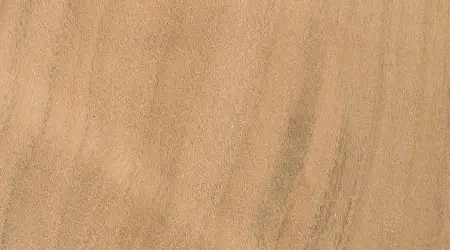
Sweet Cherry
Sweet Cherry, or Prunus avium, originates from Europe and Asia and is admired for its fine texture and attractive color. The heartwood starts as a light pinkish-brown and darkens to a rich golden brown over time. This wood is easy to work with, both by machine and hand tools, and is perfect for intricate projects like furniture and musical instruments. Although moderately durable, it is susceptible to insect attacks. Sweet Cherry’s elegant appearance and versatility make it a popular choice for many woodworking projects.
White Oak
White Oak (Quercus alba) hails from the Eastern United States and is renowned for its strength, durability, and attractive appearance. The heartwood is light to medium brown with an olive cast, and the grain is straight with a coarse texture. White Oak is highly durable, making it ideal for boatbuilding and barrels. It works well with both hand and machine tools and is valued for its ability to bend under steam. This versatile wood is a favorite for cabinetry, furniture, and flooring due to its reliable performance and aesthetic appeal.
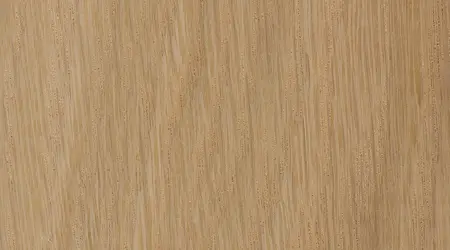
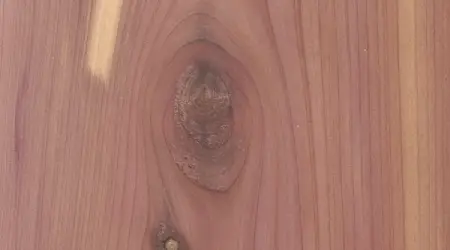
Eastern Red Cedar
Cedar Eastern Red Cedar (Juniperus virginiana), also known as Aromatic Red Cedar, is native to Eastern North America. This wood is known for its reddish to violet-brown heartwood with pale yellow sapwood streaks, creating a striking appearance. It has a fine, even texture and is highly resistant to decay and insect attacks, making it ideal for outdoor uses like fence posts and outdoor furniture. Its distinct, pleasant aroma is often utilized in closet and chest linings to repel moths. Despite its modest price, larger, clear sections are rare due to the tree’s slow growth and typically small diameter.
Water Hickory
Water Hickory (Carya aquatica) is found in the Southeastern United States and grows up to 100 feet tall. Its heartwood ranges from light to medium brown with a reddish hue, while the sapwood is paler, creating a rustic appearance. Known for its hardness and strength, Water Hickory is denser and stiffer than White Oak or Hard Maple, making it ideal for tool handles, flooring, and other applications where durability is key. However, it is difficult to work with due to its tendency to cause tearout and blunt cutting edges. Despite these challenges, it glues, stains, and finishes well.
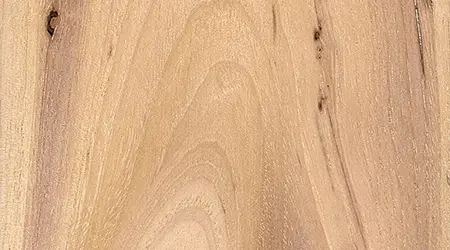
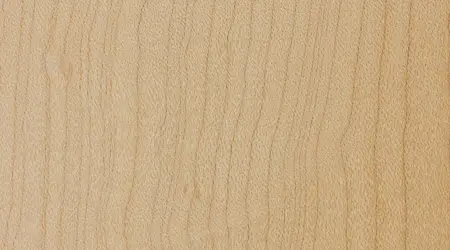
Hard Maple
Hard Maple (Acer saccharum), also known as sugar maple or rock maple, is native to northeastern North America. It grows up to 115 feet tall with a trunk diameter of up to 3 feet. The wood is known for its strength, stiffness, and density, making it ideal for flooring, musical instruments, cutting boards, and other specialty items. Hard Maple’s sapwood is often preferred for its nearly white to off-white cream color, while the heartwood is a darker reddish brown. Despite its hardness, it is relatively easy to work with but requires care to avoid burn marks when machining.
White Ash
White Ash (Fraxinus americana), also known as American White Ash, is native to Eastern North America, growing up to 100 feet tall with a trunk diameter of up to 5 feet. The heartwood ranges from light to medium brown, often with wide beige or light brown sapwood. It has a straight, regular grain with a medium to coarse texture similar to oak, and it works well with both hand and machine tools. White Ash is valued for its shock resistance, making it ideal for tool handles, baseball bats, and flooring. Unfortunately, it faces critical endangerment due to the devastating effects of the emerald ash borer, an invasive species causing widespread tree mortality.
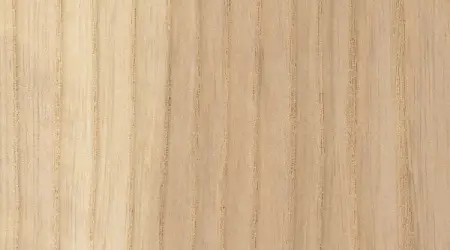

African Padauk
African Padauk (Pterocarpus soyauxii), also known as vermillion, is native to central and tropical West Africa. It grows up to 130 feet tall with a trunk diameter of 2-4 feet. The heartwood varies from pale pinkish orange to deep brownish red, darkening over time. It has a coarse, open texture with good natural luster. Padauk is easy to work with, though it may cause tearout on interlocked grain. It’s prized for its unique color and is used in veneer, flooring, musical instruments, and furniture. Padauk is moderately priced but faces increasing scarcity and trade restrictions.
Bloodwood
Bloodwood (Brosimum rubescens), also known as Satine, is native to tropical South America. It grows up to 150 feet tall with a trunk diameter of 4-7 feet. The heartwood is a bright, vivid red that darkens to a brownish red over time with light exposure. It has a fine texture with good natural luster and can exhibit a chatoyant effect. Bloodwood is extremely dense and hard, making it difficult to work with, but it finishes to an exceptional, lustrous surface. It’s highly durable and resistant to most insect attacks. Bloodwood is used in carvings, furniture, guitars, and turned objects, valued for its striking color and strength.
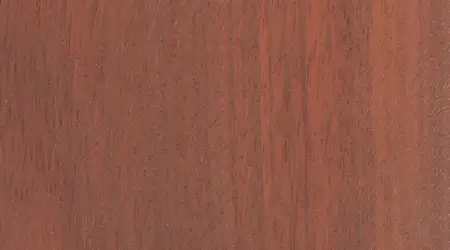

Black Walnut
Black Walnut, or Juglans nigra, is a prized wood from the Eastern United States, known for its rich brown color and durability. It features a straight to irregular grain and a medium texture with a moderate natural luster. Black Walnut is highly valued for its ease of workability, though care is needed with irregular grain. It’s widely used in furniture, cabinetry, and other fine woodworking projects. This wood’s combination of beauty, stability, and strength makes it a favorite among woodworkers.
Other kinds of wood may be available for projects upon request.